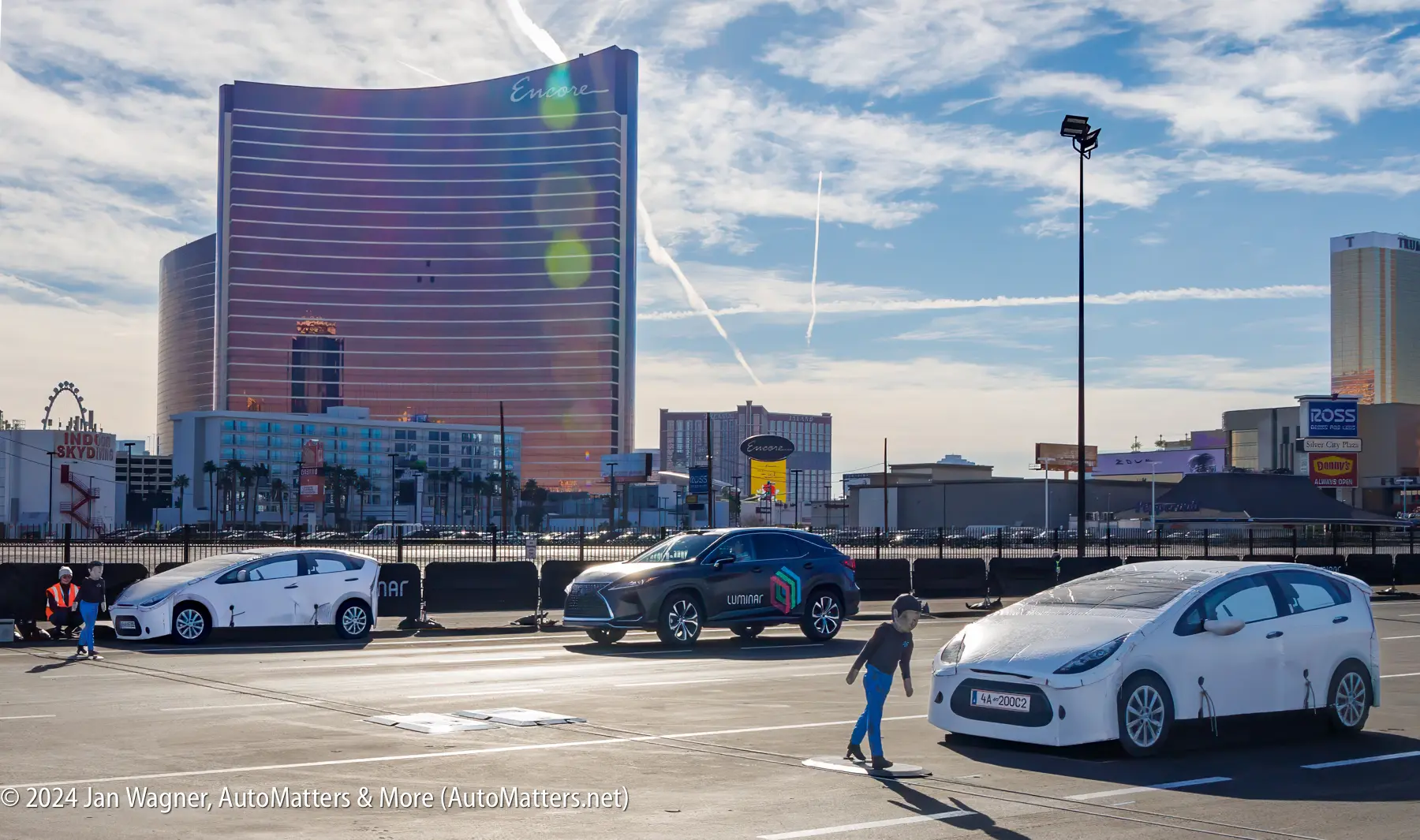
Luminar demonstrates lidar-powered automatic emergency steering at CES 2024—with VIDEO
The major U.S. international auto shows used to be places where over-the-top press conferences and exhibits presented the latest and greatest automotive technology. However, in recent years that has not been the case.
The major auto show that I used to eagerly look forward to covering every year was the LA Auto Show — primarily its press days (called Automobility LA). However, increasingly even before the especially devastating initial years of COVID-19, CES — otherwise known to people the world over as the Consumer Electronics Show — was presenting more and more automotive tech.
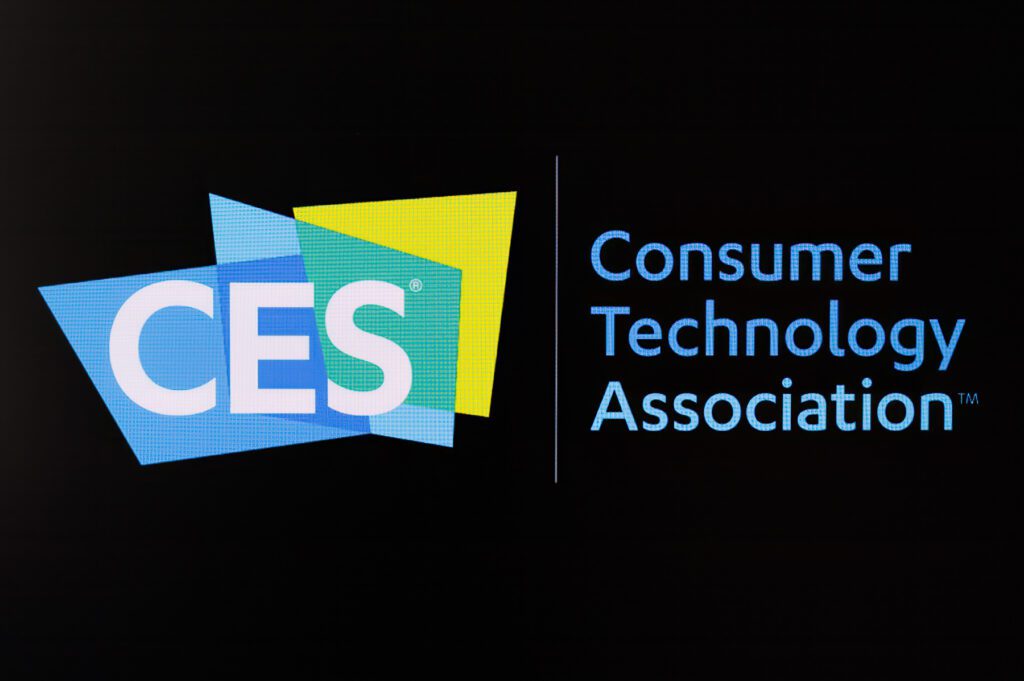
That makes sense, since CES is all about the latest and greatest consumer tech. Nothing much happened on the show front during COVID, but since then the LA Auto Show has remained a shadow of its previous self, while the auto tech and proliferation of very cool concept cars have exploded at CES.
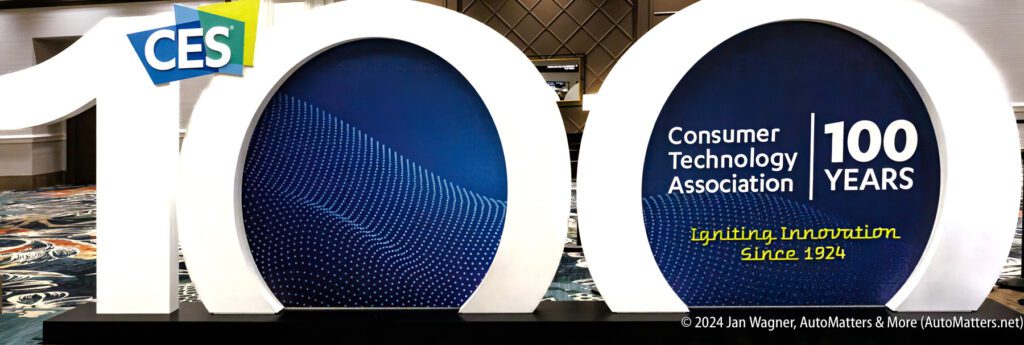
The driving demonstrations that required a lot of space at CES took place in the spacious parking lots around the Las Vegas Convention Center.

Luminar presented an on-track demo at CES for press and non-press attendees alike. The demonstration, using Luminar’s Iris+ LiDAR-powered Proactive Safety, clearly illustrated the difference between cars equipped with Luminar’s lidar technology and those without it.
Watch this 45-second VIDEO on the “AutoMatters & More” YouTube Channel:
According to Luminar, the system “provides higher-confidence detection, faster and farther than today’s most advanced camera and radar powered ADAS systems, and (shows) how new AES capabilities can help avoid collisions at high speeds without driver intervention.”
“Luminar’s Iris lidar, built from the chip-up, is a high performance, long-range sensor that unlocks safety and autonomy for cars, commercial trucks and more.” It incorporates a “single 1550nm fiber laser that enables long ranges with 1,000,000x pulse energy of 905nm while staying eye-safe.” The receiver is “the most sensitive, highest dynamic range InGaAs detector in the world when paired with our receiver ASIC. 2 axis scanning mirrors with 120° x 28° FoV, scans only the laser rather than spinning the whole lidar device (and) an in-house custom mixed signal ASIC with better performance for significantly less cost than complex ADC chips. Iris and Iris+ are designed for auto-grade, high-volume manufacturability.”
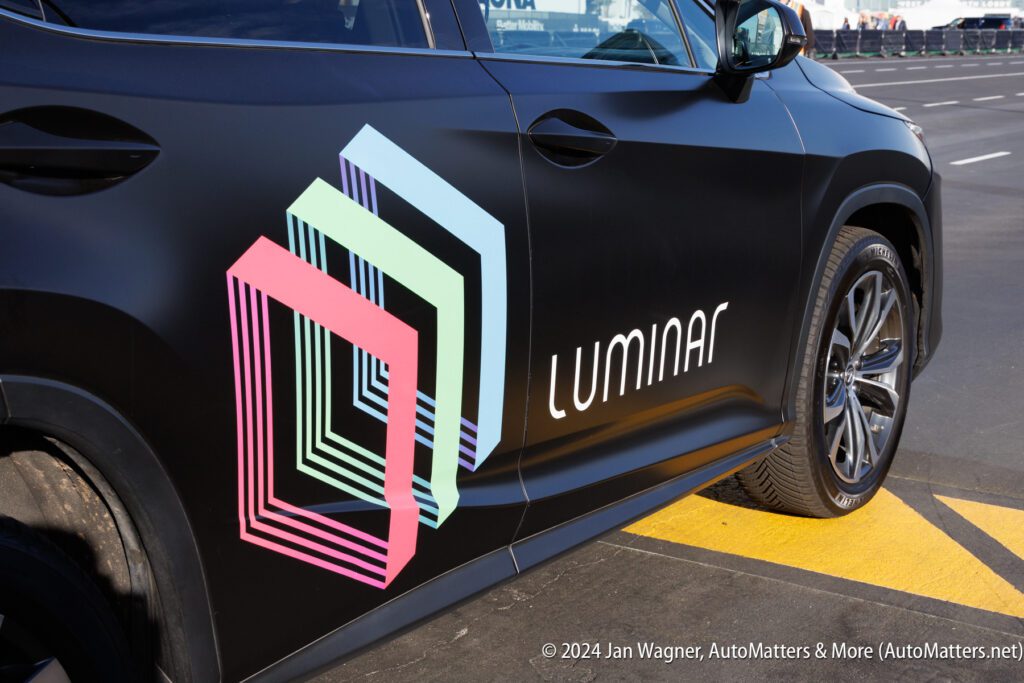
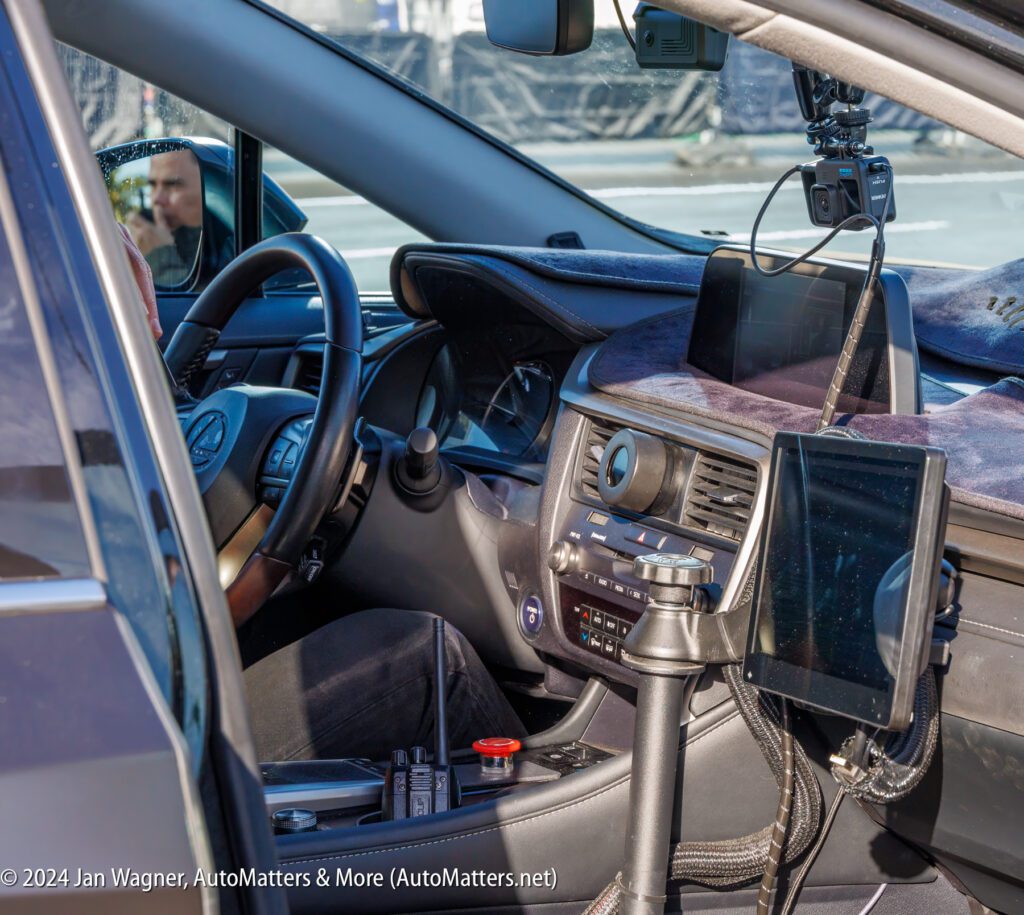
For the demonstration, two vehicles lined up side-by-side, at the start.
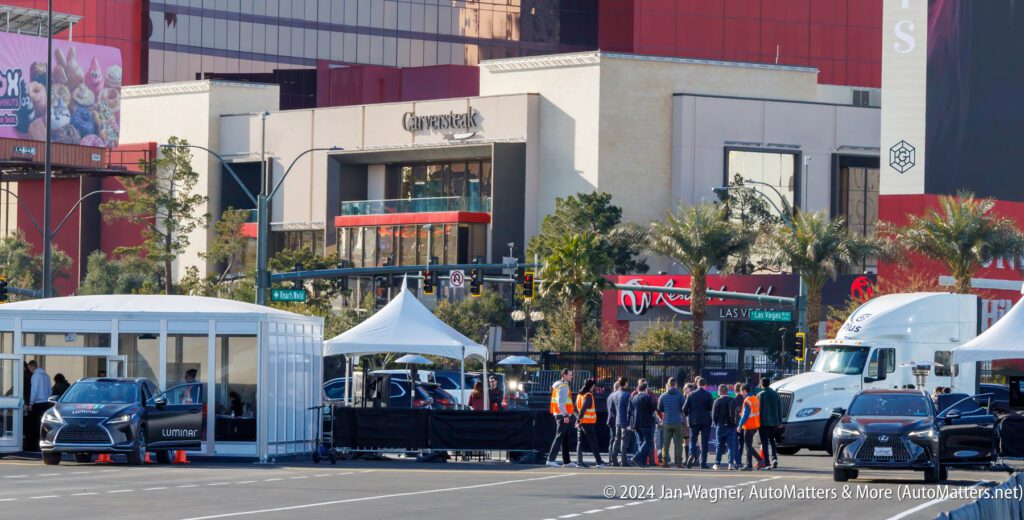
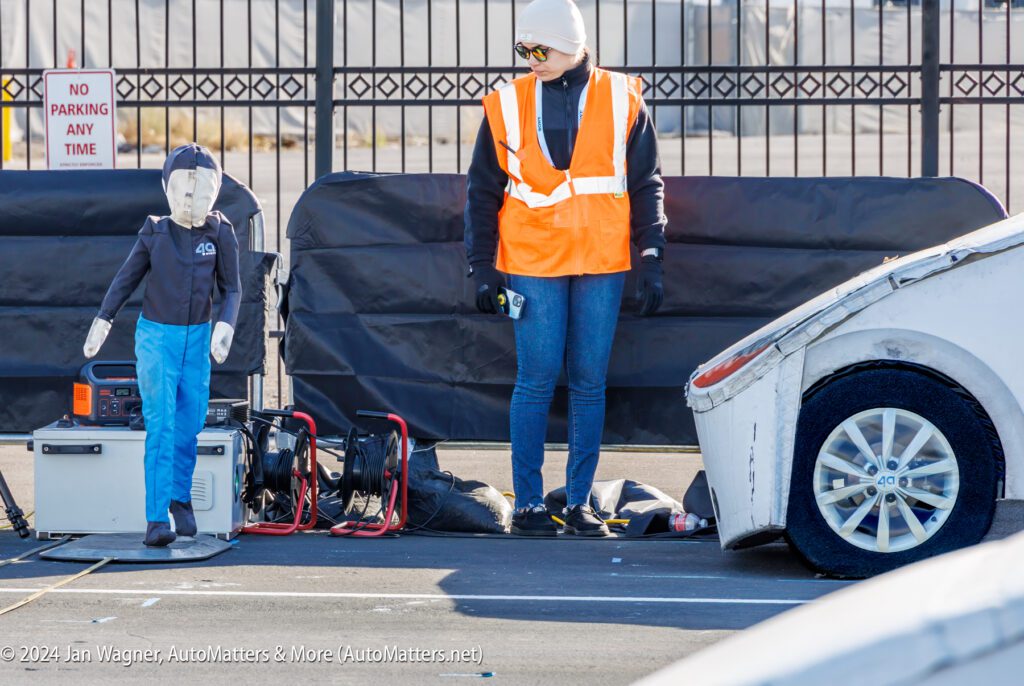
The first one, equipped with Luminar’s lidar-powered tech on-board, sped off down its lane. Once the car got up to speed, a platform carrying a ‘pedestrian’ (crash test dummy) emerged from behind a parked car.

The Luminar lidar-equipped SUV recognized the potentially life-threatening situation and swerved, successfully avoiding the pedestrian.
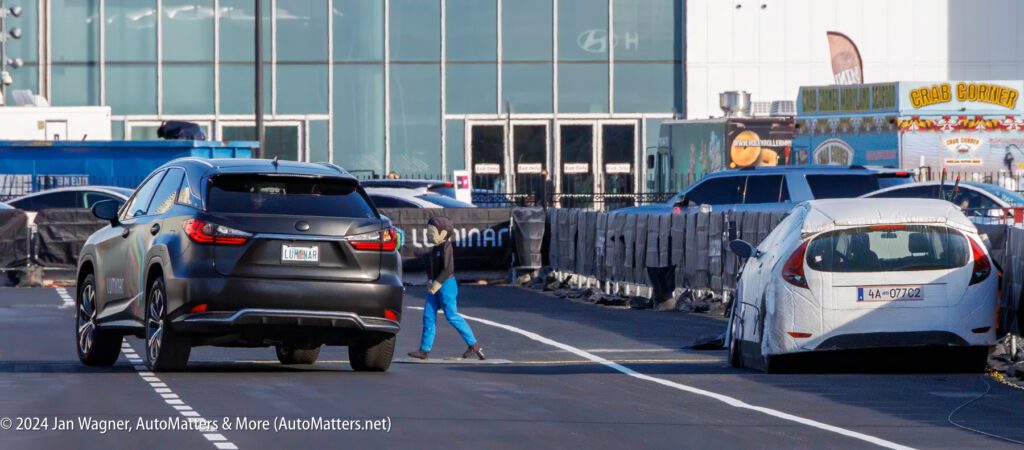
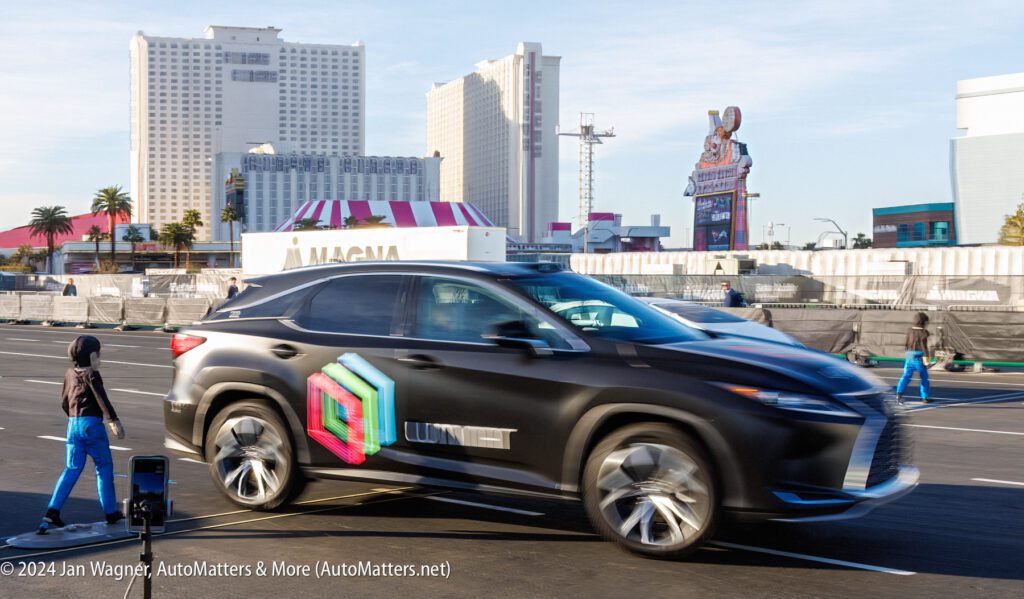
Then the other vehicle — the one that did not include Luminar’s lidar tech — commenced its run down the other lane. On cue, a ‘pedestrian’ ran out from behind a parked car. This time, however, the result was dramatically different and violent. The pedestrian was struck and run over.
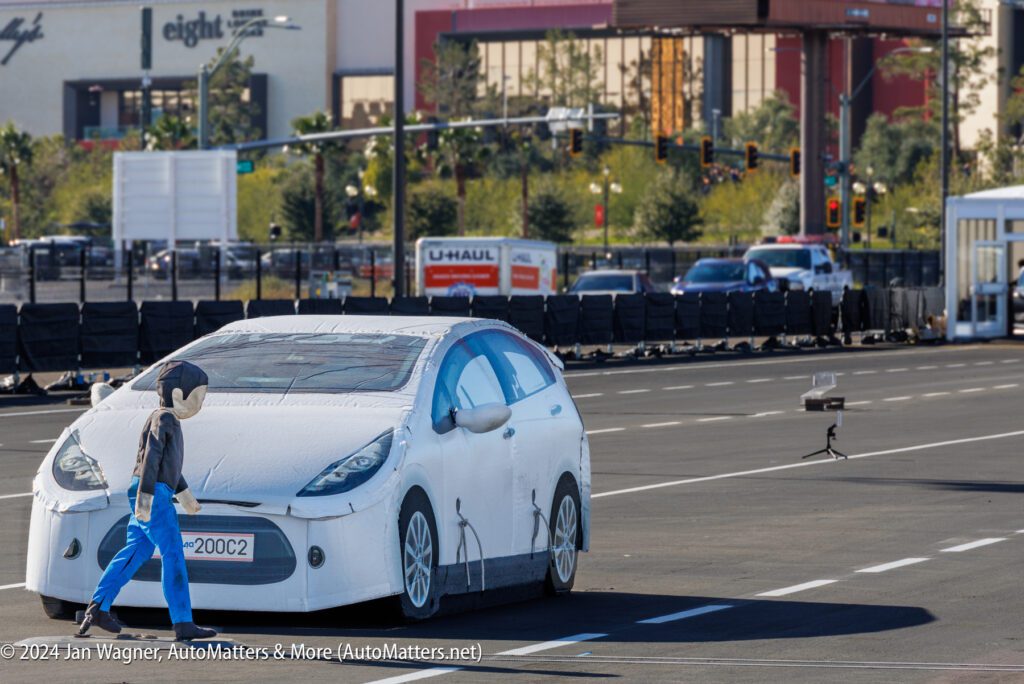

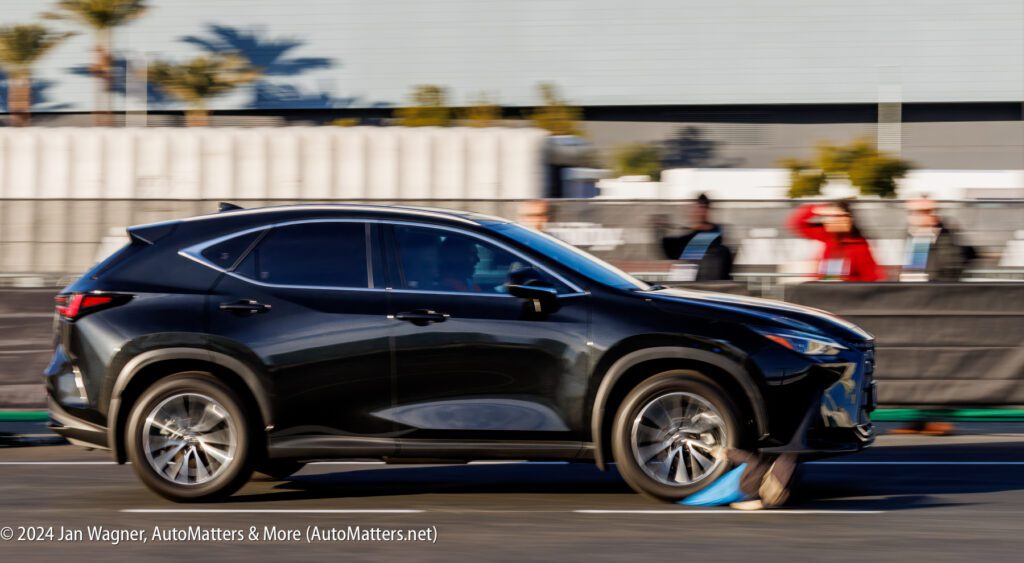



I saw two different vehicles being used as those without the Luminar lidar tech: a Tesla sedan and a Lexus SUV. The collisions between the Tesla and the pedestrian were far more violent, and did considerably more damage to the crash test dummy and the equipment used to move it into harm’s way — so much so that I was told that they rarely used the Tesla for the demo.

Luminar’s lidar technology is also a key component in the autonomous racecars (no drivers!) of the Indy Autonomous Challenge (IAC), which exhibited at CES, raced and did a multi-car demo IN THE DARK at Las Vegas Motor Speedway.
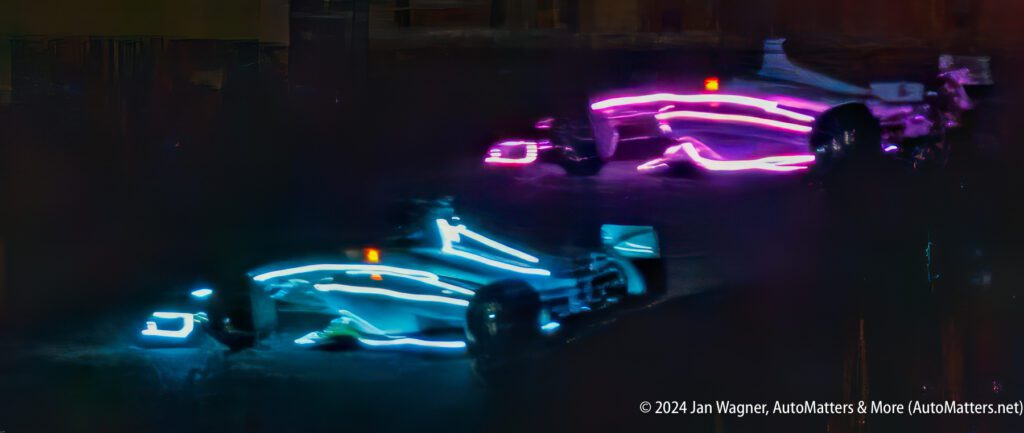
“Luminar is the exclusive lidar sensor technology sponsor of the Indy Autonomous Challenge.” Its 360-degree long-range sensing enables safe autonomy at high speeds on the racetrack. At CES 2024, the IAC announced the “the launch of its Next Gen Autonomous Vehicle Platform, the IAC AV-24.” This new “platform and related simulation tools will accelerate the development of AI Drivers capable of operating vehicles safely at speeds greater than 190 mph.” Included in its innovations is the “World’s First 360-Degree Long Range LiDAR Vision Using 4 LuminarIris Sensors” (https://www.indyautonomouschallenge.com/indy-autonomous-challenge-unveils-next-gen-autonomous-vehicle-platform-iac-av-24).
For more information, visit https://investors.luminartech.com/news-events/press-releases/detail/78/luminar-at-ces-2024. See an explanation of the underlying technology of Luminar’s automotive lidar at https://www.luminartech.com/technology.

To explore a wide variety of content dating back to 2002, with the most photos and the latest text, visit “AutoMatters & More” at https://automatters.net. Search by title or topic in the Search Bar in the middle of the Home Page, or click on the blue ‘years’ boxes and browse.

Jan, I can see that in this prearranged test that the driver with the LiDAR was able to swerve and miss the pedestrian. What would happen in a typical everyday example where there was oncoming traffic on the LiDAR drivers left. When the pedestrian stepped out, would the LiDAR equipped car choose to hit the pedestrian or swerve into oncoming traffic.
There is no right choice here, but it illustrates that a LiDAR equipped car also must have maximum braking capabilities for real life situations.
A though provoking article. David.
Good points, David. I suspect that given the wrong set of circumstances, an accident might be unavoidable.
Jan